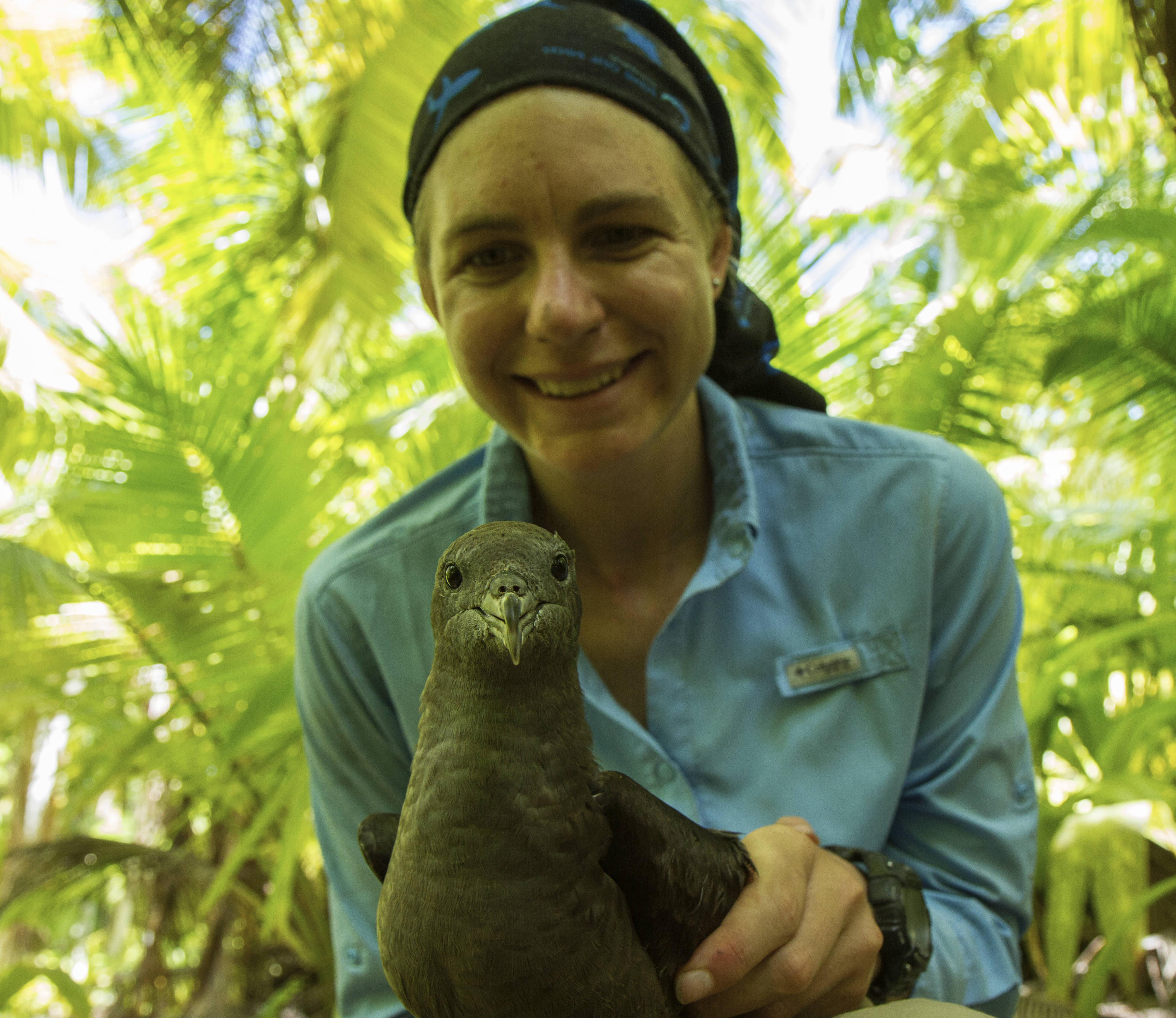
Senior author, Danielle Keys holds a Wedge-tailed Shearwater on Fouquet Island; photograph by Luke Gordon
Danielle Keys (Marine Apex Predator Research Unit, Nelson Mandela University, Gqeberha, South Africa) and colleagues have published in the journal Marine Biology on satellite tracking Wedge-tailed Shearwaters Ardenna pacifica in the Indian Ocean.
The paper’s abstract follows:
“Seabirds are distributed widely over the world’s oceans and have adopted a range of foraging tactics to secure food resources necessary for survival and reproduction. To better understand the foraging tactics and at-sea distribution of tropical seabirds, 38 Wedge-Tailed Shearwaters, Ardenna pacifica (WTS) from Réunion Island (21.375° S; 55.569° E) were tracked during 81 foraging trips using GPS loggers deployed over three breeding seasons (2016–2019). Clustering algorithms, kernel density estimation and habitat models were applied to this tracking dataset. During incubation, WTS foraged in the open ocean towards the southeast of Madagascar. During chick rearing, however, WTS restricted their distribution and implemented a dual foraging tactic, where they executed several short trips near the colony before performing a single long trip (> 200 km) in a similar south-westerly direction observed for incubating birds. Birds did not seem to show a strong preference for specific environmental conditions or habitat features and arguably cue on marine predators, conspecifics, or fish-aggregating devices to find productive foraging grounds. This study confirmed that WTS foraged in areas that have previously been identified as ‘hotspots’ for other marine species which are threatened by anthropogenic pressures; further highlighting that these areas are important from a conservation perspective.”
Dani Keys’ reearch on Wedge-taled Shearwaters gained her an MSc. Read about her PhD research on Wandering Albatrosses Diomedea exulans here.
Reference:
Keys, D.Z., Orgeret, F., Le Corre, M., Jaeger, A. & Pistorius, P.A. 2021. At-sea distribution and foraging tactics in a monomorphic tropical seabird. Marine Biology. doi.org/10.1007/s00227-021-03978-w.
John Cooper, ACAP Information Officer, 29 October 2021

 Español
Español  English
English  Français
Français